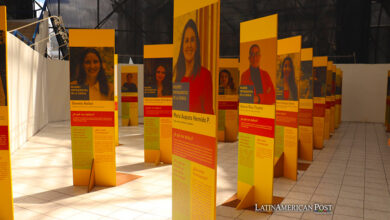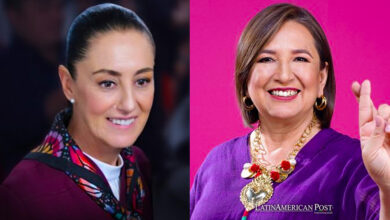Choiba, dolls that tell stories and realities of the Afro ethnic group in Quibdó.
Twenty years ago, four women displaced by violence in Colombia began making hand-embroidered dolls for displaced people in Quibdó.

The Woman Post | Nibeth Adriana Duarte Camacho
Listen to this article
Read more content like this at: thewomanpost.com
Quibdó is the capital of the department of Chocó and one of the most important populations in the Colombian Pacific Region where Afro and indigenous resistance are the order of the day.
After many years of work, these women, united and under the name of Choiba, found in making dolls the opportunity to share, let off steam, and transmit their culture to all children.
Every week in a house in Quibdó, seven women and one man meet to weave black dolls in cross stitch, a popular form of embroidery in which stitches that are in the shape of an X are used. Choiba dolls have crocheted shirts and shoes, bulging eyes, red mouths, colorful skirts, necklaces, earrings, beads, or scarves in their hair.
"When I displacement, I moved with my partner and my daughter. We lived in Río Sucio (Chocó) when the paramilitaries appeared to threaten us. Most of us went to Quibdó and it was very hard, with a lot of discrimination; For some, we were displaced, and for other guerrillas", says Edelmira Robledo Moya, who has been with Choiba for 18 years.
The hair of the dolls is from virgin sheep and they are sewn by hand; her hair is so malleable that it can be decorated, pampered, and styled with beads, colored scarves, bows, and rubber bands. The dolls are made of cloth, flannel type, a material that is not easily obtained in Quibdó – as Edelmira relates: a lady does them the favor of obtaining the material in Bogotá and sending it to them; For this reason, when there is little material, they make at least two dolls a month, but when they have the supplies, they make 50
The dolls are very popular among girls, says Edelmira, they choose them because they look like them: with their "quiet" hair, as she herself refers, their black color, and their very typical regional dresses: flowered skirts, with dots or colored geometric shapes. The dolls, for their part, wear a guayabera and colored pants, and their hair can also be combed or shaved.
«Since we are from here in Chocó and here we are all black, we make these dolls to distinguish them from the dolls from outside, from the pasta dolls… To remember our roots. For example, when I was 3 or 4 years old, my mother sewed me a very similar cloth and that was what I played with”, confesses Edelmira.
As Betty Osorio concludes in her text The Narrative of Mary Grueso Romero: Poetics and Politics of the Ethnic Identity of the Colombian Pacific, "the aesthetics and ethics of the black are produced locally and therefore achieve their objective: they give meaning on a personal level and demonstrate the agency of knowledge and own resources, are expressions of processes of the Pacific Coast that invert the notion of its inhabitants as incapable of taking charge of their own destiny. When facing globalized forces, local knowledge and ethics and aesthetics are taken into account as essential knowledge to keep both cultural and ecological territories healthy”.
Choiba's dolls are the representation of that local work, but also the representation of a culture, its traditions, its aesthetics and, of course, of the transmission of that information –those resources– to children through play.




